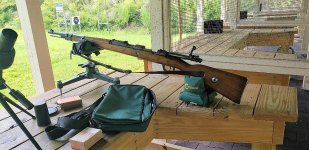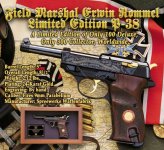VERY NICE & complete P.38 Rig !! You know I'm sure that your example is an Walther ( AC Code) version, & being of the 'g' Series was probably produced closer to the beginning of the year than the latter. Naturally, if you wish to research it, there's a wealth if related reference on the P.38 Series on the Web. If you feel like photographing all of its Proof Marks & Numbers, etc., I'll be pleased to at least give you an overall idea of what you have, from a collector's standpoint of course. Sadly though, the prices of such weapons have risen to seemingly ridiculous levels over the years, thereby precluding a great majority of novice collectors from even starting a collection of them, & or any other military WW1 / WW2 Handguns. But, anyway you look at it, your particular P.38 Rig appears to be an prime example of the type, & you should take care of it accordingly. My only remaining P.38 is an Post-WW2 P.1 variant, made on French Contract for West German Polizei useage. Mine was let's expressly for issue to, & use by the West Berlin Polizei, as due to its French mfg., it was able to circumvent the Allies restrictions banning any German produced weapons being used by, & in Berlin. Mine has the correct 1963 proofed Flap Holster, as issued to the Berlin Police, along with 2 Police mk'd Magazines #'s .1 & .2, in the Police fashion. But sadly, that's by only remaining P.38 / P.1, although I b did manage to keep a few other P.08's, etc. So, let me know if you need any information on your P.38.
Best, Dom P.











